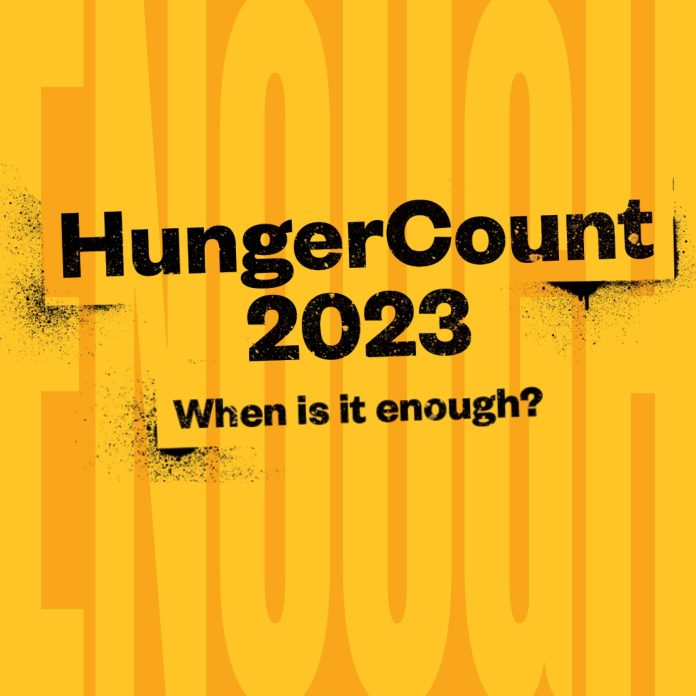
According to the newly released Food Banks Canada HungerCount 2023 report, “Relentless inflation and a broken social safety net has caused many people who never thought they would need a food bank to walk through the doors for the first time. With food banks across Canada in crisis mode, as demand reaches new all-time highs, we must ask: when is it enough before we act?” urges Kirstin Beardsley, Chief Executive Officer, Food Banks Canada.
The milestone report – the only research study encompassing the country’s 4,750+ food banks and community organizations – shows the devastating impact of rapid inflation and inadequate social supports on poverty, food insecurity and hunger in Canada.
|
Number of visits in March 2023 |
1,935,911 |
|||
|
Percentage increase from 2022 |
32.1 % |
|||
|
Percentage increase from 2019 |
78.5 % |
|||
People in every community across the country are at the breaking point.
- Food bank use rose to the highest levels in Canadian history in 2023.
- Food bank use among people who are employed continued to increase to record levels. In 2023, 17 per cent of food bank clients reported employment as their main source of income, compared to 12 per cent in 2019.
- The top reasons people accessed a food bank this year were food costs, housing costs, low wages or not enough hours of work.
- One third of food bank clients are children (representing over 600,000 food bank visits in March 2023).
- To create a Canada where no one is left behind, and no one goes hungry, all levels of government must adopt a dual approach to address the root causes of food bank use by addressing low incomes and poverty and the skyrocketing costs of living.
Food Banks Canada Policy Recommendations: Building a Better Road Ahead Demands Dual Focus
“The sad reality is that nothing will change until governments in Canada hear the alarm bells that have been ringing for far too long. Governments at all levels must respond. By focusing on urgent affordability issues and fixing our broken social safety net, a better path forward is possible – a Canada where no one goes hungry,” says Beardsley.
Food Banks Canada Policy Recommendations: It’s time to hear the alarms.
Despite years of sounding alarms and recommending much-needed solutions to address the struggles of low-income Canadians, food bank visits continue to rise. The runway for implementing solutions is running shorter and urgent government action is needed to prevent worsening conditions for millions of people in Canada.
The time to rebuild our outdated and broken social safety net is long overdue – action on an income floor is needed today.
- Canadians have watched as government-provided social supports have eroded over the last several decades. What’s left is an income floor with massive holes and inadequate foundations. It’s time for governments to take bold action toward introducing new supports, in particular for working-age singles and people with disabilities.
Governments must react appropriately to the severity of the housing crisis.
- Despite years of warning signs from experts, governments continue to build homes at a fraction of the pace needed to reach 2030 goals, and affordable housing options are diminishing every month. Serious action must be taken to increase the construction of affordable units while short-term solutions, like a rental assistance program, should be introduced to help those struggling today.
As low-income workers flood food banks, Canada needs new policies that guarantee those who work will always have enough money to put food on the table.
- This means that the long-awaited EI reforms need to be introduced swiftly. Additional living wage reforms and changes to the Canada Workers Benefit will also be necessary to ensure that Canadian workers with low incomes can make ends meet.
Food insecurity and poverty must get special attention in northern and remote parts of Canada.
- These regions suffer from much higher rates of poverty and food insecurity than the rest of the country. Solutions must shift from inconsistent and unreliable government funding to long-term, locally driven approaches to develop Northern economies.







